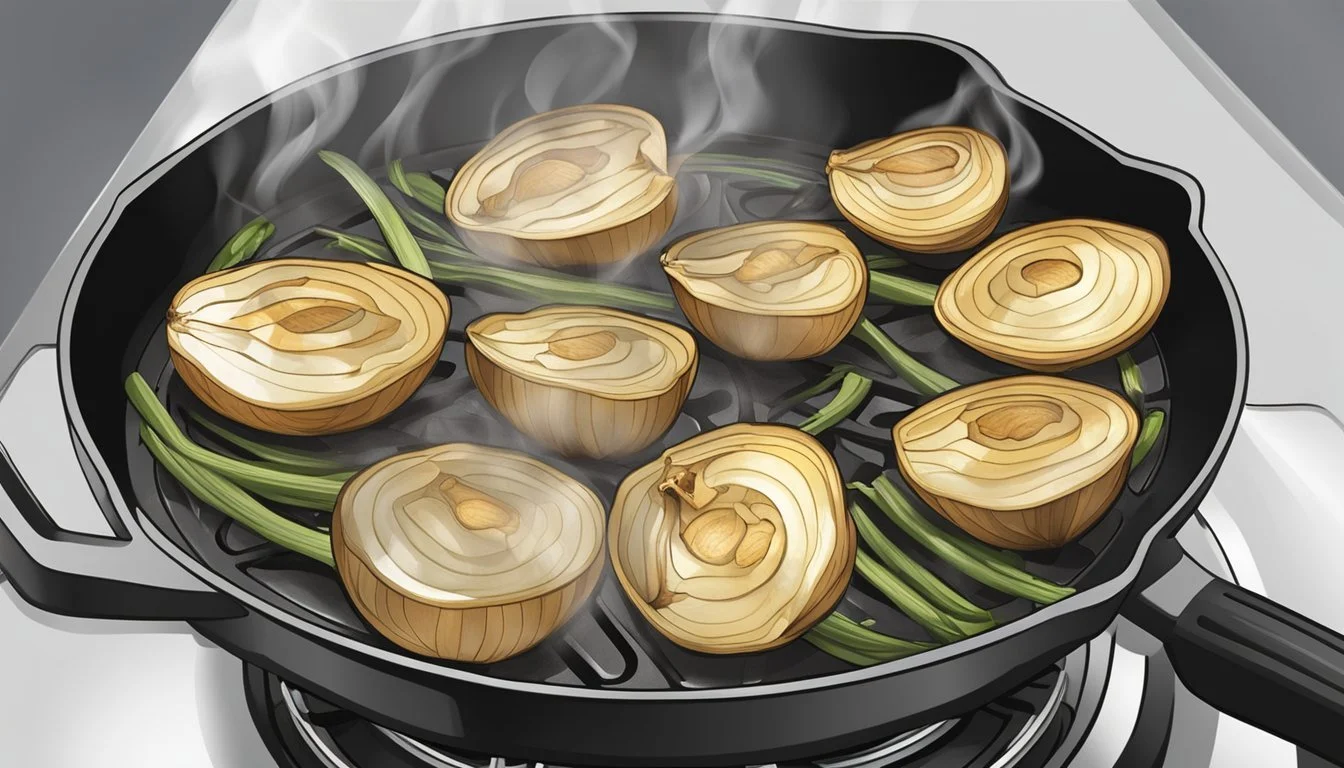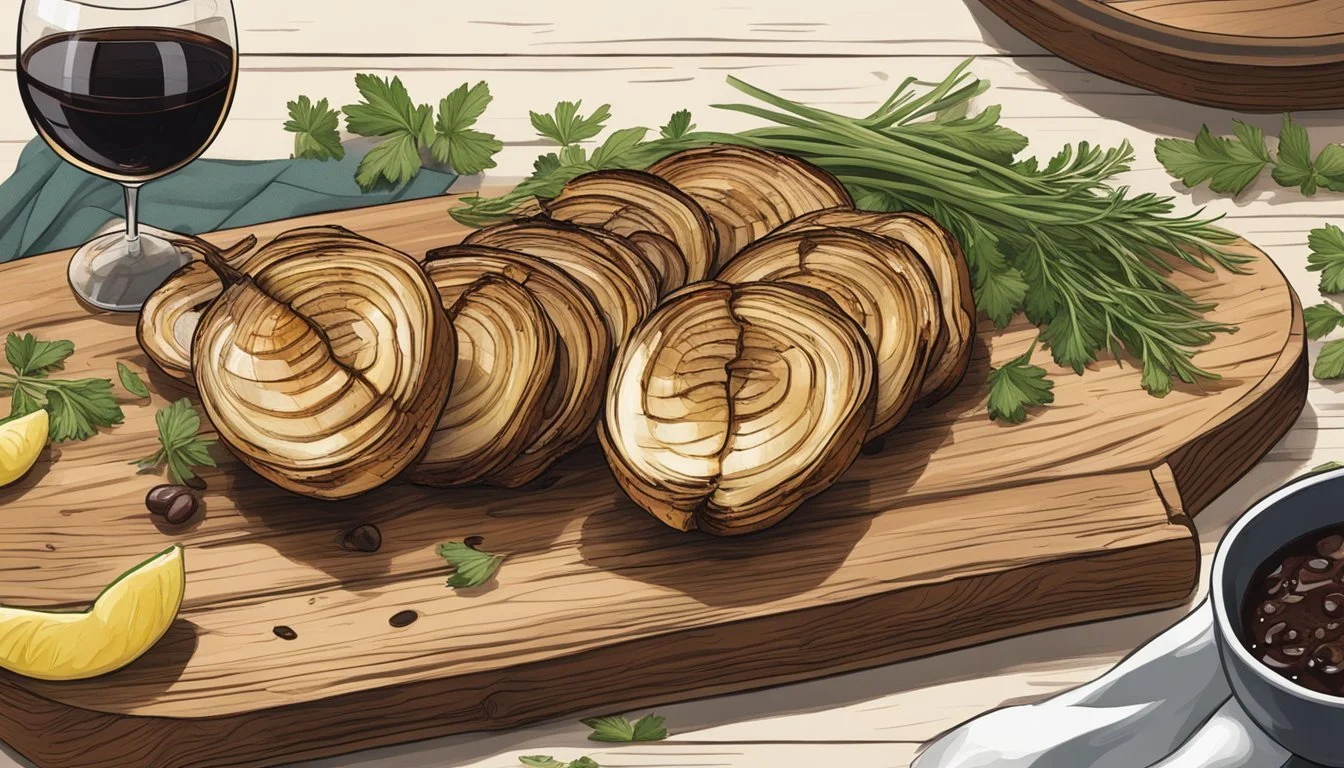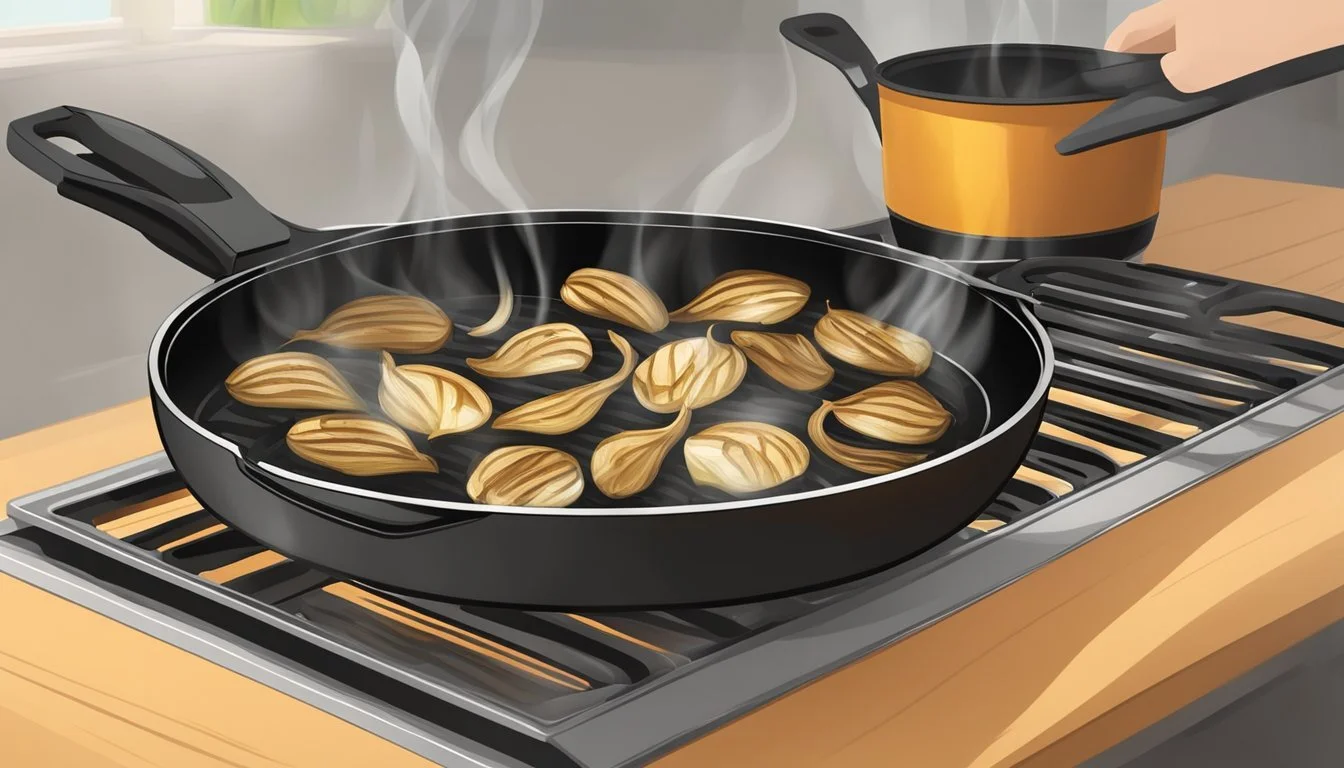How to Reheat Gluten-Free Grilled Onions
Best Methods and Tips
Reheating gluten-free grilled onions can be straightforward and rewarding when done right. Grilled onions add a delightful sweetness and complexity to many dishes, but achieving the perfect texture and taste upon reheating is crucial. For the best results, use a skillet over medium heat with a small amount of butter or oil to bring your onions back to life.
Gluten-free grilled onions deserve special attention to maintain their texture and flavor without compromising their gluten-free status. Start by ensuring the skillet is preheated adequately. Using a bit of water can keep them juicy and evenly reheated. Remember, stirring frequently will help you avoid burning and ensure the onions remain succulent.
Balancing moisture and heat is key. If your grilled onions feel dry, a few tablespoons of water can revive them effectively. This method guarantees the onions stay gluten-free and delicious, making your reheating process successful every time.
Understanding Grilled Onions
Grilled onions add a rich, caramelized flavor to various dishes. Choosing the right type of onion and knowing their nutritional benefits is essential.
Varieties of Onions for Grilling
Yellow Onions are a go-to choice for grilling due to their high sugar content, which caramelizes beautifully under heat. Their robust flavor becomes sweet and mellow when grilled.
Sweet Onions, like Vidalia onions, are another excellent option. Their natural sweetness enhances once grilled, making them a popular choice for many dishes.
Red Onions provide a more pungent flavor that softens with grilling. They add a vibrant color and are ideal for salads and garnishes.
Selecting the right onion type based on sweetness and flavor preference can dramatically affect the outcome of your grilled onions.
Nutritional Profile of Grilled Onions
Grilled onions are low in calories and fat while providing essential nutrients.
Calories: Approximately 40 calories per half-cup serving.
Carbohydrates: Mainly from natural sugars; around 9 grams per serving.
Fiber: A good source, with about 1.5 grams per serving.
Protein: Minimal, approximately 1 gram per serving.
Fat: Negligible amounts of saturated fat.
Sodium: Low in sodium unless additional salt is added during preparation.
Grilled onions also contain vitamins and minerals like Vitamin C, Vitamin B6, manganese, and folate. Their nutritional profile can contribute positively to your diet, making them a healthy addition to many meals.
Preparation of Grilled Onions
Grilled onions provide a delicious, gluten-free addition to various dishes. To ensure success, it’s important to select the right ingredients and understand the time required for preparation.
Choosing the Right Ingredients
Selecting high-quality ingredients is crucial. Opt for fresh, firm onions that are free of blemishes. Yellow onions offer a balance of sweetness and tang, while red onions add a milder flavor.
The basic ingredients include:
Onions: Yellow or red.
Olive Oil: Provides a rich flavor and helps prevent sticking.
Kosher Salt: Enhances natural flavors.
Black Pepper: Adds a mild spice.
Butter (optional): Adds richness and can be used for sautéing.
Herbs and Spices: Consider thyme or rosemary for an aromatic touch.
Ensure all selected ingredients are gluten-free, paying special attention to any seasoning blends.
Prep Time Considerations
Preparation begins by slicing onions. Cut off the ends and peel off the outer layers. Slice into rounds or half-moons, depending on preference.
Use a sharp knife for clean cuts.
Brush each slice with olive oil. Season with kosher salt and black pepper. Allowing the onions to rest for a few minutes after seasoning enhances the flavors.
If using a skillet, melt butter over medium heat before adding onions. Stir occasionally for even cooking.
Alternatively, grill onions directly on a preheated grill. Cooking times vary, generally 7-8 minutes per side, until tender and browned. Adjust based on preferred doneness.
Using foil packets can help retain moisture, or adding a few tablespoons of water while cooking ensures they remain juicy.
By focusing on high-quality ingredients and proper preparation, grilled onions can elevate any gluten-free dish.
Cooking Techniques
This section will focus on methods for reheating gluten-free grilled onions, including using grills, skewers, grill grates, pans, and air fryers. Each method has its own unique steps and essential tips to ensure the onions remain flavorful and juicy.
Grilling Onions on Medium Heat
Reheating grilled onions on medium heat ensures they retain their moisture without burning. Start by preheating your grill to medium heat. Brush the grill grates with oil to prevent sticking. Place the onions on the grill, preferably cut side down.
Allow the onions to grill for about 5-7 minutes per side. This duration ensures they are heated through while gaining a slight char for enhanced flavor. Avoid high heat, as it can cause the onions to dry out or burn. For extra moisture, consider drizzling a small amount of olive oil before reheating.
Using Skewers and Grill Grates
Using skewers for grilling onions provides uniform cooking and easy handling. Slice the onions into even chunks and thread them onto metal or soaked wooden skewers. Preheat the grill to medium heat and brush the grates with oil.
Place the skewers on the grill grates, turning them occasionally to ensure even reheating. Cook time should be around 7-8 minutes, flipping halfway through. This technique is particularly useful for grilled vegetables as it prevents pieces from falling through the grates.
Alternative Methods: Pan and Air Fryer
For those without access to a grill, reheating grilled onions in a skillet is a great alternative. Heat a skillet over medium heat, adding a small amount of butter or oil. Add the onions and stir frequently, ensuring even heating without burning. Cook time in a skillet should be approximately 5 minutes.
An air fryer provides another efficient method. Preheat the air fryer to 350°F (175°C). Place the onions in the basket, ensuring space for air to circulate. Cook for 3-5 minutes or until heated through. This method retains the onions' flavor and avoids the need for additional oil.
Post-Cooking Handling
Proper handling of gluten-free grilled onions after cooking ensures they remain delicious and safe to eat. Focus on correct storing methods and effective reheating techniques to retain the quality and flavor of caramelized onions.
Storing and Reheating Methods
Storing
Leftover caramelized onions should be cooled to room temperature within 2 hours of cooking. Store them in an airtight container to maintain freshness. The refrigerator is ideal for short-term storage up to 5 days. For long-term storage, place leftovers in the freezer where they can last up to 3 months.
Reheating
When reheating, use methods that evenly warm the onions without overcooking. The microwave works for quick reheating, using a low heat setting to avoid drying out. Alternatively, reheat on a stovetop over medium-low heat, stirring occasionally to reach the desired temperature.
Serving Suggestions and Pairings
Grilled onions can add a delightful depth to various dishes, transforming the ordinary into something special. They work superbly in main courses, alongside side dishes, and as unique toppings.
Incorporating Grilled Onions in Main Dishes
Grilled onions marry well with a variety of main dishes. They can be layered on top of a juicy steak or placed inside a burger for an extra layer of flavor. When serving steaks or ribs, grilled onions add a sweet and savory note.
For poultry enthusiasts, incorporating grilled onions with chicken dishes can enhance the overall taste. Whether stuffed inside a sandwich or mixed with a salad, the flavor profile of grilled onions offers a gourmet twist.
Enhancing Side Dishes with Grilled Onions
Incorporate grilled onions into your side dishes to elevate them. They can be mixed with grilled vegetables or served over a fresh salad to add a gourmet touch. When paired with classics like mashed potatoes or roasted steaks, grilled onions provide a smoky, sweet contrast.
For a distinct side, consider combining them with cheese and chopped parsley. They also harmonize well with sautéed greens, bringing out the flavors of dishes like garlic spinach or steamed broccoli.
Creative Toppings and Accents
Grilled onions serve as versatile toppings that can accentuate a variety of dishes. They are perfect for topping burgers, adding not only flavor but also visual appeal. Their charred texture and taste offer a gourmet bite when added to hot dogs or pizzas.
In salads, grilled onions can be mixed with lettuce and tomato for a balanced flavor. They also serve well as garnish on BBQ dishes, from ribs to steaks, offering both complexity and a hint of sweetness. Consider using them as a part of onion rings for a creative and textured addition.
Dietary Considerations
When reheating gluten-free grilled onions, it's essential to consider various dietary needs while maintaining their flavor and texture. This section explores gluten-free standards, vegan, and Whole30 diet compatibility.
Ensuring Gluten-Free Standards
Gluten-free diets avoid wheat, barley, rye, and cross-contaminated oats. Keeping grilled onions gluten-free requires attention to seasonings and oils used during reheating. Vegetable oil is a common choice due to its high smoke point and neutral flavor.
Using a clean, gluten-free skillet or grill pan ensures no cross-contamination. Add a pinch of salt and additional seasonings such as cayenne pepper or thyme without gluten-based additives.
Checking labels on seasonings ensures compliance with gluten-free standards. Reheating in a clean kitchen and double-checking ingredients keeps grilled onions safe for gluten-free diets.
Options for Vegan and Whole30 Diets
For vegan diets, avoiding animal-derived products is key. Using vegetable oil or other plant-based fats works well for reheating. A mild and sweet flavor can be enhanced with seasonings like cayenne pepper or adding depth with herbs like thyme.
Whole30 diets require avoidance of processed foods and added sugars. Olive oil, compliant vegetable oils, and fresh herbs are suitable. Avoid pre-prepared seasonings with non-compliant additives.
Ensuring the grill pan or skillet is free from animal product residues maintains vegan and Whole30 compliance. Adding savory flavors boosts enjoyment without compromising dietary restrictions.
Final Touches
To perfect reheated gluten-free grilled onions, consider making seasoning adjustments for enhanced flavor and adding garnishes and condiments for a delightful presentation.
Seasoning Adjustments
After reheating, it's essential to evaluate the seasoning of the onions. Given their tendency to lose some flavor during reheating, a light sprinkle of sea salt and freshly ground black pepper can revitalize them.
For an added punch, a quick spritz of olive oil not only heightens the flavor profile but also brings back a bit of shine and moisture to the reheated onions.
Including a dash of garlic powder or a hint of paprika can introduce a new dimension to the dish, appealing to those who enjoy a touch of spice.
When reheating grilled onions, it's beneficial to remember that simplicity in seasoning often yields the best results, especially when highlighting the natural sweetness and caramelization of the onions.
Adding Garnishes and Condiments
Toppings such as freshly chopped parsley, chives, or even a handful of toasted sesame seeds can enhance both the visual appeal and flavor.
Consider drizzling a small amount of balsamic glaze or hoisin sauce for a sweet and tangy contrast.
For those watching their nutritional intake, sprinkling some nutritional yeast offers a nutritious yet cholesterol-free option that adds a cheesy note without the dairy.
Hummus or tzatziki can serve as excellent side condiments, adding creaminess and complementary flavors. These additions not only make the dish more attractive but also provide a balanced taste that pairs well with various proteins.








